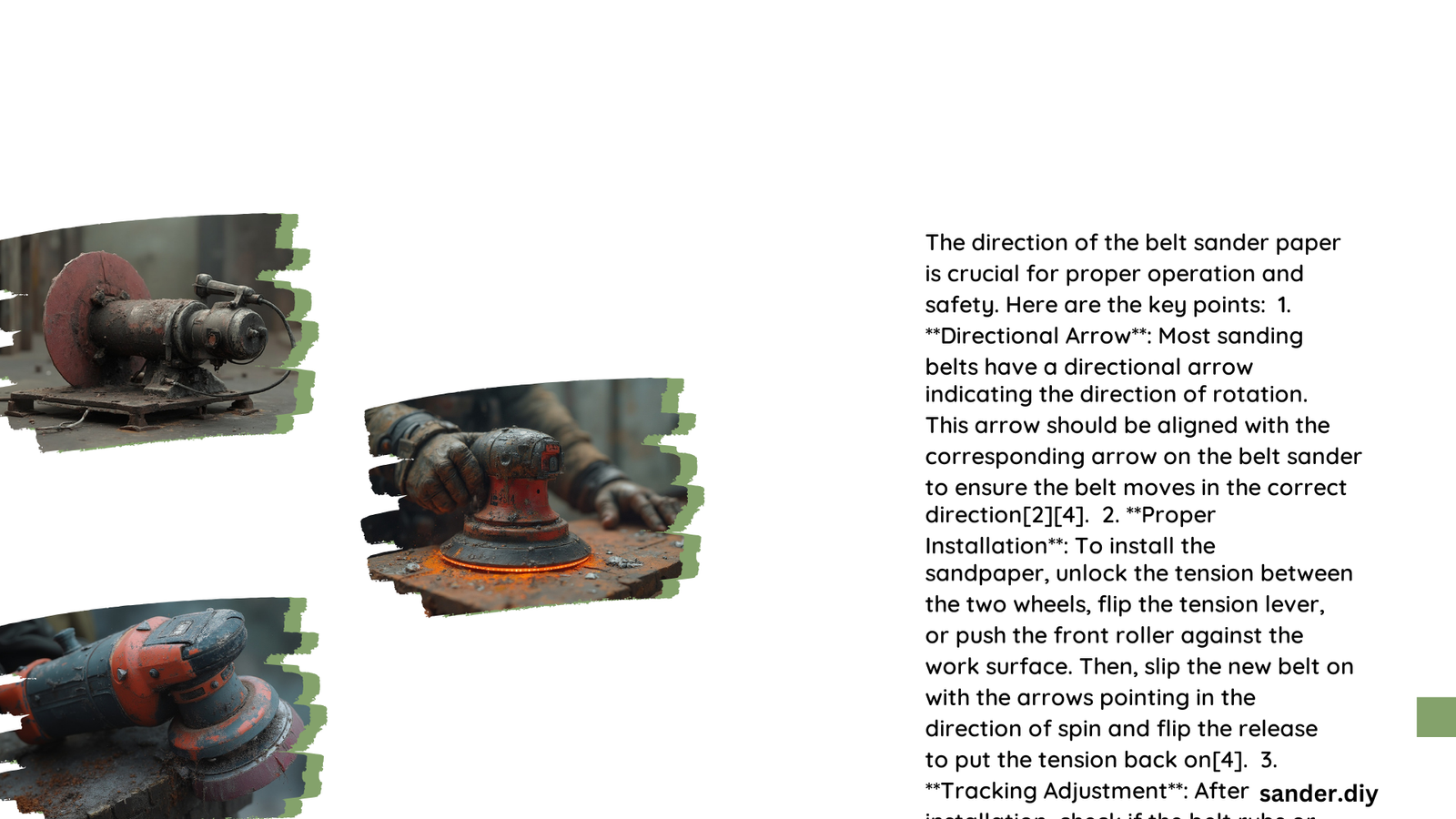Belt sander paper installation is a critical process that directly impacts sanding efficiency and tool performance. Understanding the correct orientation of sander belts involves recognizing directional arrows, understanding joint types, and following precise installation techniques to ensure smooth operation, prevent premature wear, and achieve superior surface finishing across various woodworking and metalworking applications.
Why Does Belt Sander Paper Orientation Matter?
What Determines the Correct Belt Sander Paper Direction?
Belt sander paper orientation depends on several crucial factors:
- Arrow Indicators
- Most belts feature directional arrows on the inner surface
- Arrows indicate recommended rotation direction
-
Critical for belts with overlapped joints
-
Joint Type Considerations
- Overlapped joint belts require strict directional alignment
- Butt-joint belts often support bi-directional installation
How Do I Identify Directional Arrows?
Locating Belt Arrows
- Check inner surface of sanding belt
- Look for printed arrows near belt seam
- Compare arrow direction with sander’s rotation mechanism
Step-by-Step Belt Sander Paper Installation

What Are the Precise Installation Steps?
| Step | Action | Key Considerations |
|---|---|---|
| 1 | Release Tension | Locate tension lever |
| 2 | Remove Old Belt | Inspect roller surfaces |
| 3 | Align New Belt | Match arrow directions |
| 4 | Position Belt | Ensure proper tracking |
| 5 | Re-engage Tension | Secure belt firmly |
What Mistakes Should I Avoid?
Critical installation errors include:
– Ignoring directional arrows
– Misaligning belt joints
– Improper tension adjustment
– Using incorrect belt size
Technical Insights for Belt Sander Paper Selection
What Grit Should I Choose?
Grit selection depends on specific sanding requirements:
– Coarse Grits (40-60): Heavy material removal
– Medium Grits (80-120): General sanding tasks
– Fine Grits (150-220): Smooth finishing
How Do Material Types Impact Performance?
Different abrasive materials offer unique characteristics:
– Aluminum Oxide: Standard woodworking applications
– Zirconia Alumina: Aggressive metal sanding
– Ceramic: Extreme durability for challenging surfaces
Advanced Troubleshooting Techniques
What Indicates Incorrect Belt Installation?
Warning signs include:
– Uneven sanding patterns
– Excessive belt wear
– Vibration during operation
– Reduced cutting efficiency
How Can I Optimize Belt Performance?
Recommended practices:
– Regular belt tracking adjustments
– Proper tension maintenance
– Clean sanding surfaces
– Store belts in controlled environments
Professional Recommendations
What Do Experts Suggest?
Professional woodworkers recommend:
– Invest in high-quality belts
– Follow manufacturer guidelines
– Inspect belts before each use
– Replace belts showing signs of wear
Conclusion
Mastering belt sander paper orientation requires understanding technical nuances, following precise installation techniques, and maintaining consistent equipment care. By implementing these strategies, woodworkers and metalworkers can achieve superior sanding results with enhanced efficiency and tool longevity.
